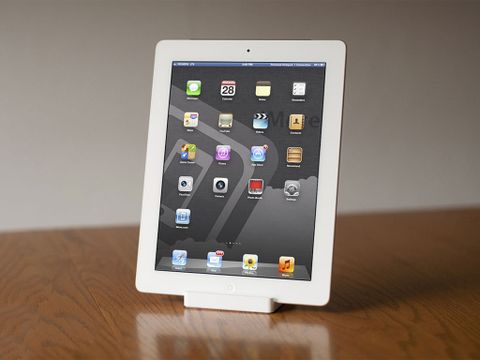It's not thinner, it's not lighter, it's not perceptibly faster; indeed the new iPad sacrifices all of those things in the pursuit of one ferocious goal -- to be better.
The new iPad is just that. Not iPad 3. Not iPad HD. Certainly not iPad 2S. It's the 3rd generation tablet from Apple, released March 16, 2012, and the simplicity and focus of the name tells you almost everything you need to know about the product.
The iPad. Better than any iPad -- any tablet -- that's come before. That's not to say there aren't compromises or criticisms, because there are plenty of both. But everything about the new iPad confirms once again how Apple envisions the future of personal computing, and how they'll continuously, relentlessly drive themselves, the industry, and the world around them towards that future by sheer force of will, audacity of engineering, and discipline of design.
Whether that future, and this iPad, is for everyone remains the question. The greater your focus, the more you exclude from your field of vision. Did Apple manage to strike the right balance?
The new iPad
| The good Eye popping Retina display and super fast LTE make words and pictures pixel perfect, and web pages and videos lightning fast. | Row 0 - Cell 1 | The bad If you don't care for Retina or LTE, it's not a compelling upgrade over the iPad 2. |
| Row 1 - Cell 0 | ||
| The conclusion Judged in a vacuum, the new iPad is incredible technology wrapped in gorgeous design at an unbeatable price. Taken in context, the new iPad will appeal most to "firsts". First time tablet buyers, first generation iPad owners looking to upgrade, and first adopters who simply want the future in their hands today. If any of those describe you, get the new iPad. |
Previously on iMore

The new iPad builds on the foundation of what came before. For a full, more contextual view of the evolution of Apple's tablet platform, see our previous reviews.
Technology
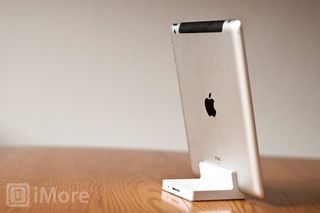
Design-wise, the new iPad is almost identical to the iPad 2, only very slightly thicker and heavier. 0.03 inches (0.6 mm) thicker, to be exact, and 0.11 pounds (51 g) heavier.
That's not a bad thing. The iPad 2 was the absolute best tablet of 2011. Wisely, instead of trying to re-invent the wheel or impose change simply for change's sake, Apple chose to address those things about the iPad it wanted to make better.
A Retina display denser at its size than anything seen in a consumer product before. LTE radios that outperform many home internet connections. A camera with not only a proper lens but a good one. And an Apple A5X chipset to bring it all together and bind it.
Retina display
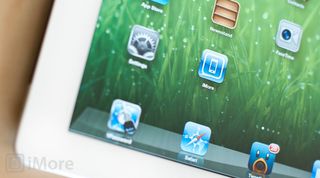
When the original iPad launched, I called it the iPhone gone IMAX and that's exactly what it felt like. The iPhone's then 480x320 screen just seemed small and cramped by comparison. Then Apple introduced the iPhone 4 and the 960x640 Retina display (technically HiDPI) and everything changed. Suddenly small was sharp and cramped was clear, and while the iPad and even the iPad 2 was still bigger, the display wasn't better. It was quantity but not quality. Seeing and reading and watching on the iPhone 4 was harder but suddenly more relaxing and enjoyable.
Now the iPad has a Retina display as well, 2042x1536 at 264ppi, and once again it's bigger and better. It's sharp without being small, clear without being cramped.
Some people have used the metaphor of putting on glasses -- of the Retina screen being so good it's like they can focus for the first time. That's not entirely it though. I have a feeling the Retina display goes deeper than that. It's so good your brain is no longer distracted, no longer filling in details or ignoring jagged edges. You can just relax and enjoy, read and watch.
Apps have to take advantage of it, of course. Any graphics still rendered at the old 1024x768 size won't look any sharper or clearer. They'll make the new iPad look just like the old ones.

When you get a fully Retina experience, however, it's transformative. Not as much as an old Standard Definition (SD) TV compared to a 1080p High Definition (HD) display, because for most people that involved the simultaneous jump from CRT tubes to LCD or Plasma flat panels. It's more like going from standard 480p to high definition 1080p web video. Like going from pulp newsprint to glossy magazine print. Everything is smoother yet more textured, cleaner yet more detailed.
There's going to come a point in the not-to-distant future when almost all displays are HiDPI, the way almost all TV shows are now available in HD and almost all magazines now use high quality printing. The new iPad simply marks the beginning.
Even iPhone-specific apps -- which the iPad can run but Apple boxes or shows at 2x to shame developers into making proper, native iPad interfaces -- now make use of Retina iPhone graphics when available. It's still not great. It's still double chunky. But it's no longer fuzzy.
Since the new iPad's Retina display is physically too dense to be shown off on anything other than a similarly HiDPI display, I put a macro lens on my iPhone 4S and took some close up photos to highlight just what that many pixels look like packed that closely together. Holding the new iPad at a distance, you don't see the pixels at all, of course. You just see the content. And that's precisely the point.



LTE and HSPA+ radios
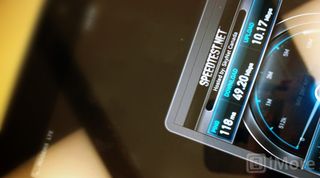
Apple has greatly increased the cellular data speed of the new iPad. 4G LTE (Long Term Evolution) is available on AT&T and Verizon in the US, and Rogers, Telus, and Bell in Canada. It enjoys a theoretical maximum speed of 72Mbps. There's no international LTE support for Australia, Asia, or Europe yet, perhaps due to the differences in LTE segments around the world. However, the new iPad also has dual HSPA+ for any GSM carrier that supports it (including AT&T in the US), which can reach a theoretical maximum of 42Mbps.
Theoretical means what you get in a lab when alone, sitting on top of the tower. In the real world we're often lucky to see half the theoretical speeds, and often considerably less.
In my tests, I've gotten anywhere from 12Mbps to 58Mbps down, and 10Mbps to 15Mbps up. HSPA+ has been 2 to 3 times faster than the iPad 2's HSPA 7.2 radio as well, at least on downloads. I've gotten between 10Mbps and 15Mbps down, though uploads have been disappointing, rarely if ever exceeding 1 Mbps.
Streaming 1080p video over LTE is fast and smooth, starting immediately and playing through without stuttering or buffering. On HSPA+, it took longer and typically had to stop to buffer mid-stream.
You can turn off LTE in Settings, and the handoff is extremely smooth and quick -- the LTE indicator goes off and the 3G (or 4G on AT&T... sigh) comes on. Switching back from HSPA+ to LTE is problematic. You have to either wait a few minutes, stay in Airplane mode for a while, or power cycle the iPad to regain an LTE connection. This isn't unique to the iPad, however, and something LTE Android users have been dealing with for over a year. Hopefully future chipsets will enable faster LTE re-engagement.
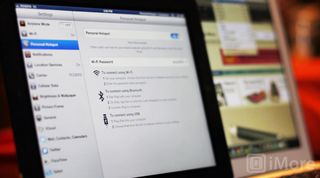
Tethering using the built-in Personal Hotspot feature (not currently supported by AT&T) was fantastic. It rivaled a home or office Wi-Fi connection. While it functions the same as the iPhone Personal Hotspot, I'd much rather use up my iPad data and battery while tethering, and leave my iPhone charged for phone calls and messaging. Also, because the iPad has an LTE radio and a much bigger battery, you can tether faster than an iPhone and for longer than any other smartphone.
In our tests, with the iPad tethered to Rogers LTE and the screen off, battery drained at roughly 4-5% an hour, significantly less the much smaller capacity iPhone 4S tethered on Rogers 4G, which was closer to 15%.
LTE and HSPA+ performance in general is entirely dependent on where you are and when, and how many people you're sharing the cell tower and backhaul internet connection with, however, so results can and will vary considerably.
Also, faster and less frustrating internet connections mean faster and less noticeable data consumption. If movies keep timing out and apps seem like they take forever to download, you're more likely to switch to Wi-Fi. Forgetting you're on LTE or HSPA+ can lead you to reaching your data cap without realizing it. So plan your data and monitor your usage accordingly.
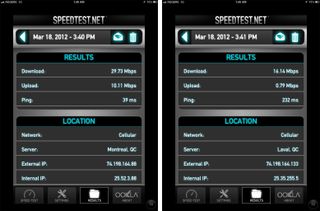
Bluetooth 4.0

Apple previously added Bluetooth 4.0 to MacBooks and the iPhone 4S, and now it's come to the iPad as well. It's inclusion doesn't mean much right now, since there are very few accessories that support it, but its potential is intriguing.
Bluetooth 4.0 includes "low power" and "smart ready" attributes that open the door for peripherals running on a simple coin-cell battery, like you might find in a watch. It can connect to smart accessories, including everything from a pressure sensitive stylus to a heart rate monitor, by providing a channel for all sorts of different data types. It also has better range.
We'll have to wait for Bluetooth 4.0 accessories to start hitting the market in larger numbers, however, to see what real impact it makes.
5 megapixel, 1080p camera

Apple has been paying a lot of attention to cameras lately. Nowhere is that more apparent than in the difference between the abysmal iPad 2 rear camera and the new iSight-branded camera on the new iPad. This iSight camera boasts 5 megapixels, equivalent to the iPhone 4 camera, but with many of the iPhone 4S improvements, including a f/2.4 lens and 1080p video-recording capabilities.
In our photography editor, Leanna Lofte's tests, the new optics on the iPad's iSight camera picked up a lot more detail, and produced much better bokeh (out of focus area), with a shallower depth of field. Images had much more "pop" as well.
Video was likewise improved, with full 1080p support and built-in image stabilization. Again this is similar to, if not quite as good as the iPhone 4S camera.
While most people probably won't use the iPad camera most of the time, if you're using your iPad when something important happens -- a child or loved one does something adorable, or you simply stumble across something you need to remember -- you can now take a picture or shoot a video and get good results. It's opportunistic, but since it could well be the "best camera" you have with you at a given moment, it's important that it's finally usable.
As to the front-facing FaceTime camera, it remains condemned to VGA resolution which now fails to take advantage of the high definition Retina display. Macs have begun shipping with FaceTime HD cameras. The new iPad should have as well.
Apple A5X processor
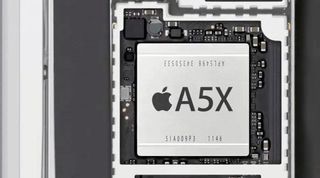
The original iPad debuted Apple's first-ever homespun Apple A4 system-on-a-chip (SoC). The iPad 2 followed up with the Apple A5, a dual-core, ARM Cortex A9. Instead of an Apple A6 chipset, however, the third generation iPad launched with a souped up version of the Apple A5 dubbed the Apple A5X. While still a dual-core CPU (Central Processing Unit), the Apple A5X has a quad-core GPU (Graphics Processing Unit), powered as usual by Imagination's PowerVR technology, and a full 1GB of RAM.
In practice that may sound like it should lead to a faster new iPad. However, a lot of that power is directed into supporting the new Retina display. 4 times as many pixels means 4 times as many pixels to buffer and push around, after all. So, instead of being faster, it's working harder to maintain the same speed.
That's impressive, though it's not as perceptibly impressive. Games will benefit from the quad-core GPU, and app and web page caching will benefit from the extra RAM. Overall, however, web pages render about as fast as they did on the iPad 2, apps launch about as fast as they did on the iPad 2, and overall the responsiveness is about as good as it was on the iPad 2. Everything is just much, much better looking.
No doubt matching the iPad 2's performance while adding in the Retina display was a necessity for Apple. Selling a slower iPad would be much harder than selling a very slightly thicker, very slightly heavier new iPad. And matching the iPad 2's performance while adding a Retina display is a remarkable achievement.
However, there are some people, like our own senior editor, Georgia, who would have preferred the same screen as the iPad 2 if it meant web pages and apps would load and perform 4 times faster. It's similar to people who would rather watch fast loading, fast playing low-res video than wait for slower loading, often buffering HD video on the web.
Conversely, Designers, photographers, readers, videophiles, and many others are no doubt ecstatic over the better looking, same performance compromise.
- New iPad vs iPad 2: App launching and web rendering speed test
Some have also criticized the Apple A5X for making the new iPad warmer to the touch. In over a week of hard use, and many tests, I found that the new iPad does get warmer than previous generations. I noticed that mostly because previous generation iPads were always freakishly cold no matter how hard I pushed them. Even going all out, on LTE, playing hard core games, AirPlay mirroring them, and tethering, my iPad never got warmer than iPhones have always gotten when tethering, charging, or using GPS navigation. Nor did the new iPad get anywhere near as hot as MacBooks get playing Flash video.
Battery
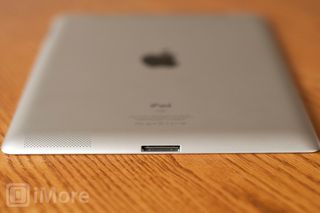
In the new iPad, Apple has included a much higher capacity, 42.5 watt-hour (11,666 mAh) lithium-polymer battery. It's rated for the same 10-hours of Wi-Fi battery life as the iPad 2, and an impressive 9-hours of 4G LTE battery life. Since Wi-Fi battery life remains the same, and LTE battery life is 90% of Wi-Fi battery life, it stands to reason most of that extra capacity is going towards powering that big, bright Retina display.
Like with the Apple A5X processor and performance, there are some who might have preferred the old, standard density display with this new power capacity, and enjoyed the ability to go 17 hours on a single charge. But again, Apple was intent on pushing the state-of-the-art of digital display technology, and this was just one more area required to play a supporting role.
Charging the almost double-capacity battery of the new iPad also takes almost twice as long. Roughly 9 hours. That makes it more of a plan-ahead and leave-it-overnight activity than previous iPads.
Experience

The late Steve Jobs established the score card by which any new iPad must be judged. He did it in January of 2010 when he introduced the product category -- it's ability to outperform both a smartphone and a laptop in the key areas of browsing (web), email, photos, video, music, games (apps), and eBooks (reading).
Browsing (web)
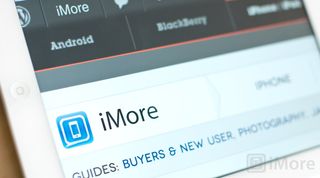
Because it brings so many different elements together in such a dynamic way, the web more than anything else has the potential to exemplify just what an experiential difference the new iPad can make.
Browsing the web on an iPad has always been a fantastic experience, primarily due to multitouch. There an intimacy and tactility to swiping, pinching, and tapping your way through a website that keyboard, mouse, and more distant displays could never match. The new iPad makes all of that even better. Text automatically looks fantastic and if the site is using TypeKit or a similar font system, it can look positively illuminated.
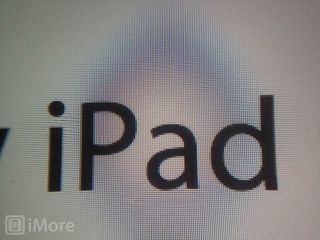
If a website supports HiDPI images, the level of clarity and detail you can see, especially in photography, is unbelievable. If a website is serving 1080p content, video looks likewise spectacular.
Some of those "ifs" are fairly big, however. While you can take text almost for granted already, there's no standard for implementing images or video yet. Designers are pretty much on their own when it comes to figuring out how to support Retina display and HiDPI screens on the web. Whether or not you can get HD video is also dependent on the content creation and delivery systems providing it. Low res images and video will still look like low res images and video on the new iPad, and painfully so.
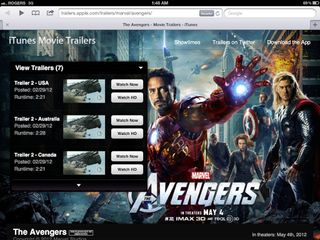
The optional LTE and HSPA+ cellular data speeds also make a qualitative difference. Everything from pages to videos load fast, sometimes even faster than home internet connections. It means you use your data up faster as well, of course, but if you work or spend a lot of time away from Wi-Fi, and you need performance, it's there for you.
Conversely, while the Apple A5X chipset performs better on SunSpider JavaScript tests, it's not incredibly better. In general, web pages seem to render at about the same speed as they did on the iPad 2. Apple is using the more powerful processor to support the denser Retina display, not to significantly improve Safari performance.
Since Adobe has officially abandoned mobile Flash development, there's no point even mentioning Flash on the iPad anymore. (You can still use workarounds if a site you need hasn't made an app or updated for HTML5 yet.) There's still no access to media or documents from Safari, however. So, for example, you still can't upload a picture to Facebook or a video to YouTube unless you leave Safari and use the Facebook or YouTube app (or an app that supports their services).
Despite that, despite sites not getting rendered perceptibly faster, if you're on LTE or HSPA+ the web loads much faster, and with the Retina display, it can look amazingly good.
With the new iPad, Apple absolutely has the best web browsing experience on the planet right now.
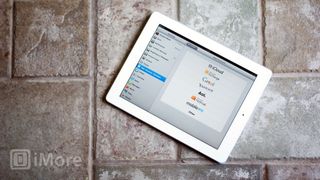
The email reading experience benefits from the high quality Retina display text, and attachments download faster on LTE and HSPA+ than they do on older generation iPads. It's an appreciable improvement, if not as spectacular as web browsing or some of the other categories.
For triaging email on the go, an iPhone or smartphone remains a more mobile solution. For pounding out large quantities of long messages, a laptop still wins out. For browsing and shooting off quick replies from the living room, coffee shop, or conference table, the iPad is still a great option, but not significantly better than it was before.
Photos
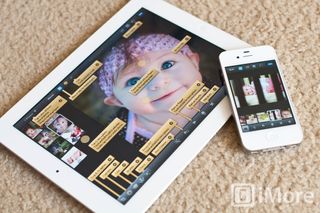
Photography looks spectacular on the new iPad. Not only does the pixel density of the Retina display make them look less like newspaper photos and more like high end magazine photos, but the colors are brighter and better than previous generation iPads as well. It's still an In-plane Switching (IPS), Light-Emitting Diode (LED) backlit panel, it's just a better panel. And the 5 megapixel camera means you can snap pictures if you ever need to and not be totally embarrassed by the results.
Apple also used the introduction of the new iPad to release iPhoto for iOS [$4.99 - Download now], and complete the mobile version of their iLife suite. iPhoto runs on both iPhone and iPad but the larger iPad screen feels much better suited to photo manipulation. The interface itself has been divisive, with as many photo- and design-concious users liking it as not. It's definitely less elegant and discoverable than typical Apple apps, and it's a very different take on image editing than Adobe's recently released Photoshop Touch [$9.99 - Download link].
For professionals who want to carry portfolios around with them or touch-up images on the go and for first time users who simply want an easy way to fix up and share their family or vacation photos, the fantastic new Retina photo rendering and powerful new photo editing, combined with the existing screen size and portability of the iPad, make the already best in class experience even better.
Video

Both the iPhone 4S and the iPad 2 could load 1080p video, but they couldn't play it in its native resolution. (They were constrained to roughly 540p and 576p at 16:9 respectively). The new iPad can natively display 1080p content with room to spare (1150p at 16:9 to be precise). Analogies could be drawn to going from a 720p to 1080p television, but it's not the same. You typically don't sit with a TV in your lap, and from 10-feet away, most televisions aren't really physically big enough to make the difference in resolution apparent.
With the new iPad is, the difference is readily apparent.
If you'e a videophile, looking at 1080p video on the new iPad is a revelation. It's crystal clear and, like with photography, the picture is vivid and vibrant.
Thanks to LTE, you can watch it almost instantly, and without any annoying pauses to re-buffer. That lack of frustration, which would often cause people to abandon 3G and run back to Wi-Fi, may lead you to watch so much video you blow through your data cap without even realizing it. (How incredible is it that that's now a problem?)
On the content creation side, Apple has update iMovie [$4.99 - Download now] to coincide with the new iPad release. The update mainly added Retina display support and more consumer-friendly features like a movie trailer maker, but along with the recently released Avid Studio for iPad [$4.99 - Download now], it shows video editing is establishing itself strongly on the platform. Like with video viewing, the Retina display allows you to see much more detail when making edits, especially for HD movies, and LTE means the speed is there to post it to YouTube, Facebook, Vimeo, and other popular sharing sites. It's no replacement for a Mac running Final Cut Pro X or a Windows box running Adobe Premiere, but for some things it's experientially better than a Mac running iMovie or a Windows box running low end editing software.
Music

Apple invented the iPod, developed iTunes, and drove the digital music revolution, but while they've spent a lot of time and effort improving the iPad's display and camera, they haven't done much to improve its audio capabilities... pretty much ever. In terms of 3.5mm stereo jack and mono speaker, the iPad has remained frozen in time since it's introduction. While there were rumors the speaker might have at least gotten a volume boost this time around, that doesn't seem to be the case.
Arguably what the original iPad had was enough. Put a great pair of headphones on and you're in for some amazing audio. For anyone who needs or simply wants to use the built-in speaker, however, no such luck. You're left to crane your neck and cup your hand, or buy a 3rd party speaker like the excellent Jawbone JAMBOX [$179- Buy now].
BlackBerry has always had good speakers and while gimmicky, HTC has gone in with Beats by Dre for their audio. Hopefully Apple will give audio some of the same attention they've given optics in the near future.
Because of it's size, the iPad is better for browsing and discovering new music, whether that be exploring your collection in the Music app or expanding it in the iTunes Store app. It's also great for browsing podcast catchers like Instacast HD [$4.99 - Download now], or one of several streaming audio options like Slacker [Free - Download now] or Rdio [Free - Download now]. Because of it's size, however, the iPad still isn't as portable as an iPhone or iPod (or other smartphone or MP3 player). Sure album art looks great, but since music isn't primarily a visual activity, portability trumps presentation. Even three generations in, the iPad isn't as good as the smartphone for audio consumption.
Creation is another story. Apple's already phenomenal GarageBand for iOS [$4.99 - Download now] was also updated for the new iPad and while the Retina graphics are nice, the new Jam mode is fantastic. It lets you collaborate wirelessly with a group of friends and really take your music to a new social level. With apps like the astonishing djay for iPad [$19.99 - Download now], mixing is as good as making, and the iPad easily trumps the cramped screen of the iPhone and gives consumer desktop music software a run for its money.
Games (apps)
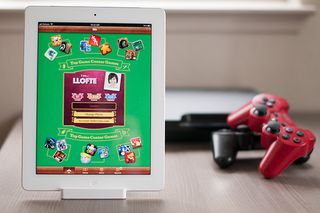
Thanks to hardcore titles like Real Racing HD 2 [$6.99 - Download now], Infinity Blade II [$6.99 - Download now], and Modern Combat 3 [$6.99 - Download now], and casual titles like Angry Birds HD [$2.99 - Download now], Draw Something [$0.99 - Download now], and Cut the Rope [$1.99 - Download now], the iPad 2 was already a portable gaming powerhouse. While it couldn't match dedicated gaming consoles for pure polygon count or precision of control (multitouch just isn't a gamepad), it easily could in terms of sheer quantity, variety, and plain old fun. The new iPad improves on that in two obvious areas. The Retina display just looks fantastic, and games that take advantage of it now look better than 1080p. The quad-core graphics in the new Apple A5 chip also help push the polygon count and should lead to a generation of even better gaming. Angry Birds Space [$2.99 - Download now] is already out. Infinity Blade: Dungeons will be out soon-ish as well.
Smartphones remain more convenient when waiting in line or otherwise out and about, and PCs will always have keyboards and upgradable graphics cards for incredibly complex über-gaming. In between the two, the iPad is now better than ever for when you're on the couch, watching something else on TV, or at a coffee shop or on a bus or train and just want to game. The bigger screen makes gameplay easier, and the longer battery life means not draining your phone or laptop. So while it might not be better, the new iPad is better than before.

When it comes to other apps, what Steve Jobs said during an Apple conference call remains true -- the 9.7-inch screen allows for a different class of software, not just smartphone apps stretched out or PC apps crammed down. Apple wants high quality, highly optimized apps on the iPad, and by any measure they've achieved that goal. Their latest figures put iPad-specific apps in the App Store at over 170,000. (Total app count, almost all of which can run on the iPad in boxed or 2x mode, is over 550,000.)
Retina display and faster LTE and HSPA+ networking both work to improve that experience on the new iPad. It's an iterative improvement to be sure, and for many apps it won't make a difference. Arguably, Apple's introducing of iOS 5 and iCloud -- both available on previous generation iPad's as well -- are far more meaningful for the platform. In that regard, the new iPad hardware probably won't lead to a new generation of better iPad apps, but the new iPad hardware will be able to exploit the new generation of iPad apps better than any that came before.
Like with the iLife apps listed above, Apple has already updated their iWork office apps to work with the new iPad: Pages for word-processing and layout [$9.99 - Download now], Numbers for spreadsheets [$9.99 - Download now], and Keynote for presentations [$9.99 - Download now].
eBooks (reading)

Reading is what benefits the most from the Retina display. While 1080p video is nice and HiDPI photos look great, motion and contiguous regions of color are far more forgiving to low resolution than is plain, black and white text. That's why seeing beautiful type and reading articles and books on the new iPad is such a huge improvement. I've said it before but it's worth repeating -- it's like going from old, smudgy newsprint to glorious, glossy magazine pages.
Apple updated iBooks [Free - Download now] immediately, and Amazon has updated Kindle for iPad [Free - Download now] as well. As usual, Kindle has the much bigger library, but iBooks looks much, much better. And it's not just the text -- pictures in everything from illustrated kids books to text books to full on comics books, if they've been updated for Retain, look absolutely sumptuous. The detail, the clarity, and the color are astounding.
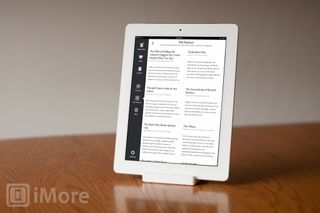
RSS apps like The Early Edition 2 [$4.99 - Download now] read later apps like Instapaper [$4.99 - Download now] and social aggregation apps like Flipboard [Free - Download now] all look unbelievably good (at least the text does, most web sources aren't yet serving Retina-ready images for them to make use of).
The only exception is, of course, most magazines. Not only haven't they updated for Retina display, it's going to be problematic for them to do so. Rather than actually make iPad apps or iPad content to begin with, they relied on a dodgy Adobe InDesign exporter to spit out large, graphic versions of every page of their magazine (even when those pages were primarily text). That not only made their downloads wastefully large, but it stuck them in low resolution. If they simply up the resolution of their InDesign exports for Retina display, their magazines will become prohibitively large.
Print magazines aren't going to get more popular, and digital magazines aren't going to get less popular. It's well beyond embarrassing.
Magazines aside, the new iPad reclaims it's position as the best way to read on an electronic device. It's almost as sharp as an iPhone again (and far sharper than many other smartphones), and far more intimate than reading on a computer. I often find myself saving articles on my iPhone or MacBook to read on the iPad, even to read immediately and not later, because the experience is really that much better.
iOS 5.1
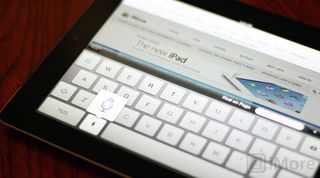
The first iPads shipped with iOS 3.2, which introduced the iPad-sized interface to iOS, and iPad 2 shipped with iOS 4.2 which re-unified the platform and brought features like multitasking to the iPad for the first time. The third-generation iPad shipped with iOS 5.1, which is nowhere near as ambitious as previous versions, but doesn't really need to be. The iPad got iOS 5 day and date with the iPhone last October. It was a huge release that included Notification Center, iMessage, Twitter integration, Reminders, and perhaps most importantly of all -- iCloud. So the interface has been introduced, the platform re-unified, the heavy updating is all done. (At least until iOS 6 ships presumably later this year.)
While the new iPad didn't get Apple's virtual personal assistant, Siri, it did get voice-to-text Dictation. Tap the microphone button on the keyboard, talk, let Apple's servers do their work, and the words appear (almost all the time.)
That's not just a convenience either, but it's a big deal when it comes to accessibility, which is an area Apple continues to lead in and something that should become more important to everyone.
FaceTime wasn't updated to allow for LTE or 3G video calling, or video conference, which would have been exceptional on the Retina display. Also, there are still no Clock, Weather, Stocks, or Voice Memo apps on the iPad.
There is a newly redesigned Camera app, and you can now delete photos from Photo Stream. There are some new water-themed wallpapers for the iPad, and the Music app gains the same podcast controls the iPhone and iPad app have had for years.
Although not iOS 5.1 specific, alongside the software release, Apple updated their servers to allow for 50MB over-the-air iTunes and App Store downloads, and the US received the ability to re-download previously purchased movies via Movies in the Cloud.
And... that's about it.
Pricing and availability
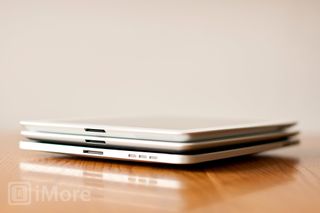
The new iPad starts at the same $499 price point as the previous generation iPad 2, and the new 4G LTE model costs the same additional $130 as the previous generation 3G model. Storage capacities remain the same as well, as do black and white color options.
- 16GB: $499 / $629
- 32GB: $599 / $729
- 64GB: $699 / $829
The new iPad launched on March 16 in the US, Australia, Canada, the UK and 8 other regions, and on March 25 in Italy, Spain, Ireland, Mexico, and 21 other regions. More are expected to follow shortly.
Compatibility
The new iPad is fully compatible with almost all apps and games currently available in the App Store.
Accessory compatibility is tricker. Since the new iPad is slightly thicker and heavier, skin cases and other cases that were tightly moulded to the iPad 2 design probably won't fit properly on the new iPad. Looser, pouch-style cases should be fine.
Screen protectors and Apple Smart Covers should also be compatible, but some early 2011 third-party magnetic covers may not work properly due to differences in polarity.
Cables, Bluetooth peripherals, and other accessories should work properly but double-check with the manufacturer or retailer if you have any questions or concerns.
Conclusion
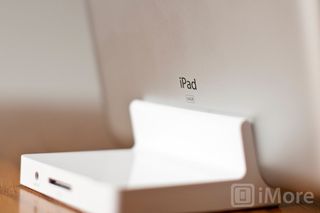
The new iPad is something of a paradox. In many ways to many people it seems like a modest, iterative update to last year's iPad 2. But that's only because the iPad 2 was such an achievement. Go back in time just a few short years and the 2012 iPad would be science fiction. A display that dense, networking that fast? It would be Star Trek.
It's fitting that such a futuristic product represents so well Apple's vision for the future. A car, to use Steve Jobs' metaphor, quickly slipping ahead of a pack of trucks. Automatic transmission that doesn't allow as much control as the old manual clutch, but makes driving so much easier for so many more people. And now faster and better looking than ever. That's a vision that began with the Apple II, continued with the Mac, and has now finally taken form with the iPad.
There are a lot of compromises in furtherance of that vision, but they're the right ones and the right balance. There are no complex windowing or file systems to get lost in, just full screen apps and a single button that will always take you Home. There are keyboard and gesture shortcuts, and fast app switchers and notification pull downs for advanced users to enjoy, but they're easily ignored by those for whom traditional computers have always been intimidating and off-putting.
For anyone who doesn't want a computer but just wants their web sites and email, photos and videos and music, games and eBooks, the iPad becomes all those things, and now with more detail, splendor, and speed than ever before.
It's not perfect. You can criticize missing features here and there, and the lack of control Apple allows power users who want to manage every aspect of their computing environment. But for power users tired of having to do that management, who want to stop working and just work, those criticisms are elegantly eclipsed.
Judged in a vacuum, the new iPad is incredible technology wrapped in gorgeous design at an unbeatable price. Taken in context, the new iPad will appeal most to "firsts". First time tablet buyers, first generation iPad owners looking to upgrade, and first adopters who simply want the future in their hands today. If any of those describe you, get the new iPad.
If you have an iPad 2, unless you specifically need a Retina display or LTE/HSPA+ connectivity, there's no reason to upgrade. What you have is still outstanding. (Proven by Apple continuing to sell the 16GB version of the iPad 2 at a discounted $399 / $529 price point.)
If you don't have the iPad 2, consider the new iPad. It's simply the most accessible, most mainstream computing appliance in history made better than ever. If you want something smaller and cheaper, take a look at the BlackBerry PlayBook or Amazon Kindle Fire. If you want something more easily tweaked and with a more desktop-like feature set, look at an Android tablet like the Asus Transformer Prime or wait for Microsoft's Windows 8 tablets to start rolling out later this year.
Then seriously consider the new iPad again before getting any of those. Go to an Apple Store or Apple reseller like Best Buy or Walmart and try it out, touch it, use it. Unless you specifically don't like Apple or have a compelling use-case that an iPad simply can't fill, the new iPad has the most apps, media content, and accessory support available.
It's not thinner, it's not lighter, it's not perceptibly faster; indeed the new iPad sacrifices all of those things in the pursuit of one ferocious goal -- to be better.
And it is.

Rene Ritchie is one of the most respected Apple analysts in the business, reaching a combined audience of over 40 million readers a month. His YouTube channel, Vector, has over 90 thousand subscribers and 14 million views and his podcasts, including Debug, have been downloaded over 20 million times. He also regularly co-hosts MacBreak Weekly for the TWiT network and co-hosted CES Live! and Talk Mobile. Based in Montreal, Rene is a former director of product marketing, web developer, and graphic designer. He's authored several books and appeared on numerous television and radio segments to discuss Apple and the technology industry. When not working, he likes to cook, grapple, and spend time with his friends and family.
Most Popular




